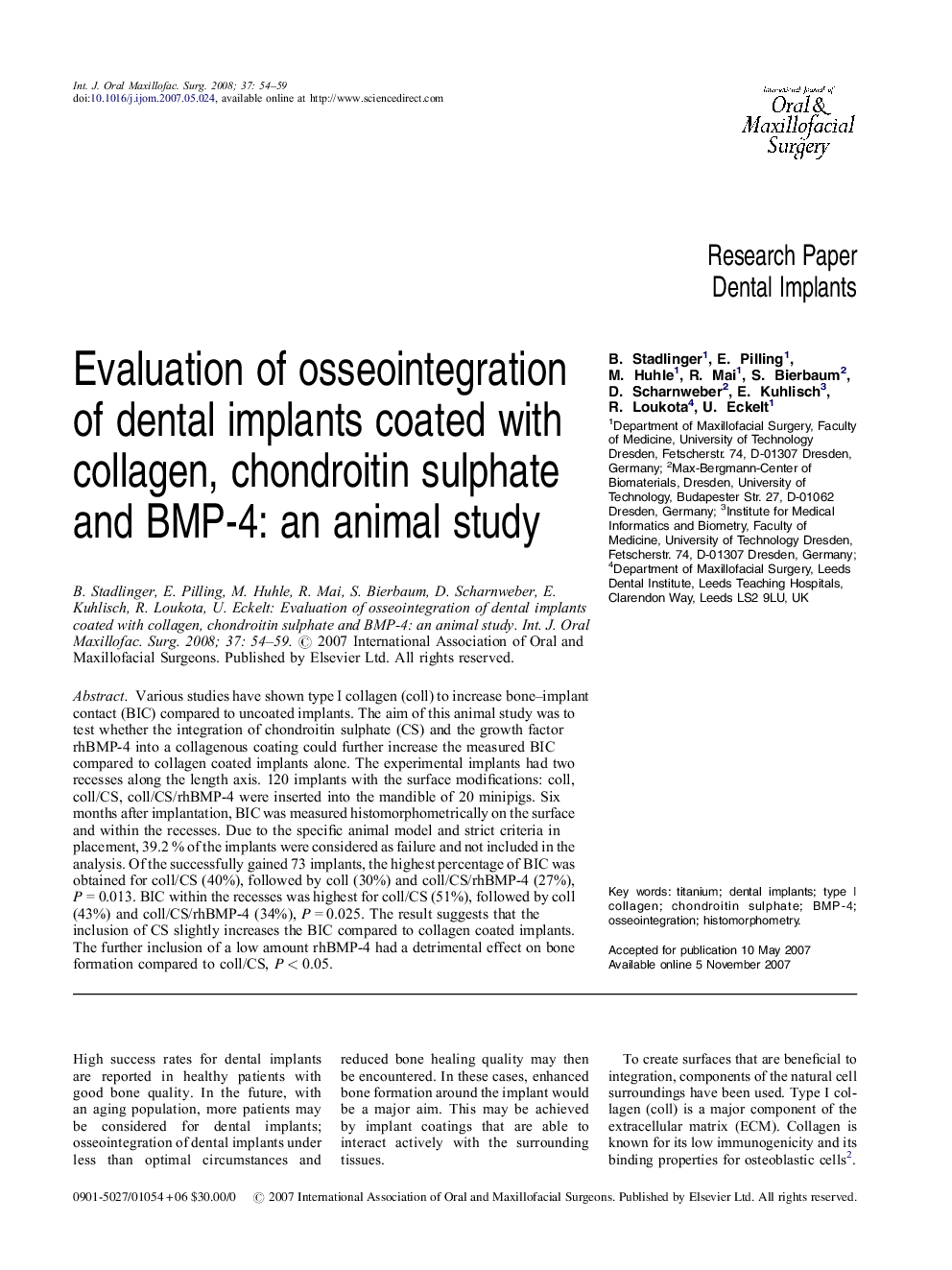| Article ID | Journal | Published Year | Pages | File Type |
|---|---|---|---|---|
| 3134794 | International Journal of Oral and Maxillofacial Surgery | 2008 | 6 Pages |
Various studies have shown type I collagen (coll) to increase bone–implant contact (BIC) compared to uncoated implants. The aim of this animal study was to test whether the integration of chondroitin sulphate (CS) and the growth factor rhBMP-4 into a collagenous coating could further increase the measured BIC compared to collagen coated implants alone. The experimental implants had two recesses along the length axis. 120 implants with the surface modifications: coll, coll/CS, coll/CS/rhBMP-4 were inserted into the mandible of 20 minipigs. Six months after implantation, BIC was measured histomorphometrically on the surface and within the recesses. Due to the specific animal model and strict criteria in placement, 39.2 % of the implants were considered as failure and not included in the analysis. Of the successfully gained 73 implants, the highest percentage of BIC was obtained for coll/CS (40%), followed by coll (30%) and coll/CS/rhBMP-4 (27%), P = 0.013. BIC within the recesses was highest for coll/CS (51%), followed by coll (43%) and coll/CS/rhBMP-4 (34%), P = 0.025. The result suggests that the inclusion of CS slightly increases the BIC compared to collagen coated implants. The further inclusion of a low amount rhBMP-4 had a detrimental effect on bone formation compared to coll/CS, P < 0.05.
